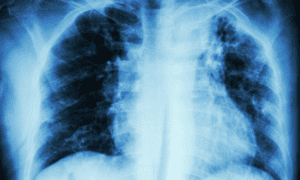Pulmonary Fibrosis And Pulmonary Rehabilitation
Pulmonary Fibrosis (PF) is a chronic progressive lung disease that involves scarring in the lungs. Over time, scar tissue disrupts the movement of oxygen from the lungs’ tiny air sacs into the bloodstream. Low oxygen levels and stiff scar tissue can make people with pulmonary fibrosis feel short of breath, especially when walking or exercising.
The global prevalence of pulmonary fibrosis is estimated to be 13 to 20 per 100,000 people. According to the European Respiratory Society, an estimate of 32,500 people in the UK have pulmonary fibrosis, with a prevalence rate of about 50/100,000. In the U.K, 6000 new cases of pulmonary fibrosis are reported each year in the age group of 50 an 70 years. Pulmonary fibrosis kills one in every 100 people.
Symptoms:
You may have pulmonary fibrosis for a long time without experiencing any symptoms. Shortness of breath is usually the first symptom to appear.
Other signs and symptoms may include:
- A chronic dry, hacking cough
- Weakness
- Clubbing refers to the curving of the fingernails.
- Chest pain
- Weight loss
Causes & Risk Factors:
Pulmonary fibrosis scars and grows the tissue around and between your lungs’ air sacs (alveoli). This makes oxygen entry into your bloodstream more difficult. Many different factors can cause the damage, including:
- Cigarette: Smoking increases your chances of developing pulmonary fibrosis.
- Working With Dust Or Fumes: Breathing in chemicals or toxic substances regularly can seriously damage the lungs.
- Certain Medical Conditions: In some cases, pulmonary fibrosis is caused by another medical condition (such as the autoimmune disease rheumatoid arthritis or a viral infection).
- Radiation Exposure: Radiation exposure, such as that used in cancer treatment, can cause pulmonary fibrosis.
- Medications: Some medications, such as certain heart medications, can cause it.
- Genetic: Some cases is attributed to their genes expression
- Idiopathic: The exact cause of pulmonary fibrosis is unknown in many cases. When this occurs, the condition is known as idiopathic pulmonary fibrosis (IPF).
Diagnosis:
To evaluate your disease, your doctor may review your personal and family medical history, discuss your signs and symptoms, review any dust, gas, or chemical exposure you’ve had, and perform a physical exam.
A variety of other tools may be used by your doctor to diagnose pulmonary fibrosis or rule out other conditions. These could include:
- Pulse Oximetry is a noninvasive blood oxygen level test.
- Blood Tests are performed to detect autoimmune diseases, infections, and anemia.
- Arterial Blood Gas Test to more accurately assess your blood’s oxygen levels
- Sputum Sample to look for signs of infection
- Lung Function Test to determine your lung capacity
- Echocardiogram Or A Cardiac Stress Test to determine whether a heart problem is the cause of your symptoms
Treatment:
Your doctor can prescribe medications to help you breathe better and slow the progression of the disease.
The following are some examples of current treatments for pulmonary fibrosis:
Medications:
Your doctor may advise you to take medications such as pirfenidone and nintedanib. These drugs may aid in slowing the progression of pulmonary fibrosis.
Oxygen Therapy:
Although using the oxygen will not prevent lung damage, it will make breathing and exercise easier. It can also help stop or lessen the effects of low blood oxygen levels.
You may receive oxygen while sleeping or exercising, though some people may use it constantly. Some people carry an oxygen canister with them.
Pulmonary Rehabilitation:
Pulmonary Rehabilitation is a medically supervised program that assists people with chronic lung diseases to improve their disease management including their breathing, physical endurance and quality of life. If you have a lung disease such as pulmonary fibrosis, you may require pulmonary rehabilitation for at least 6-8 weeks. You will learn physical exercises, breathing techniques and self-management strategies during the program. The classes are held in a group setting so that you can meet others who have the same condition and provide and receive peer support.
The program’s skills and knowledge will help you feel better and manage your pulmonary fibrosis. Pulmonary rehabilitation focuses on:
- Physical exercise to improve your endurance
- Techniques for breathing that may improve lung efficiency
- Nutritional advice to improve your body’s physiology
- Counseling and support
- Health education about your condition
Exercise:
Exercise is very important in any pulmonary rehab program because it improves the function of your lungs and heart.
The exercises may include:
- Strength Training: The majority of pulmonary rehab exercises are designed to increase endurance. Strength training, such as weight lifting, has also been shown to be beneficial.
- Upper Body: Upper body muscles are necessary for breathing as well as daily activities. Turning a crank against resistance or simply lifting your arms against gravity are examples of arm and chest exercises.
- Lower Body: Most rehabilitation centers provide a set of exercises centered on leg workouts. They range from simple treadmill or track walking to more strenuous stair climbing.
- Breathing: Blowing through a mouthpiece against resistance may help to strengthen your breathing muscles. These exercises may be beneficial for people who have extremely weak breathing muscles.
Emotional Support:
People with severe pulmonary fibrosis are more likely to be depressed or anxious. Relaxation training and counseling are available in some pulmonary rehabilitation programs. Also people suffer from low self esteem and exhibit avoidant or anxious behavior. Psychotherapy techniques such as Cognitive behavioral therapy, acceptance commitment therapy and solution focused therapy can be supportive to improve quality of life in patients with pulmonary fibrosis.
You’ll also have the opportunity to meet other people who have pulmonary fibrosis and share your feelings and emotions.
Diet:
Overweight and underweight people have a more difficult time managing their PF. So, you should eat a healthy diet.
- Reduce your intake of sodium (salt), added sugars, and saturated and trans fats.
- Consume lean meats and fish, fruits, whole grains, beans, vegetables, and low-fat dairy products to get a large percentage of your calories.
Educate Yourself:
Many pulmonary rehabilitation programs provide group or one-on-one education sessions to help you learn how to manage your pulmonary fibrosis better. Sessions could focus on topics such as:
- Recognize your medication treatment plan.
- If you use oxygen therapy, you can learn how to make the most out of it.
- If you’re a smoker, it can help you quit.
Benefits:
The majority of people who complete a pulmonary rehab course experience better quality of life with a sense of control over their symptoms. Pulmonary rehabilitation can help you manage your symptoms and perform better on a daily basis. The benefits of pulmonary rehabilitation include:
- You may experience fewer symptoms, such as a decreased cough or shortness of breath.
- Your life quality may improve.
- You might be able to walk more or exercise more effectively.
- You may experience less fatigue.
References:
- “The Basics Of Pulmonary Rehabilitation”. Retrieved from lung.org: https://www.lung.org/lung-health-diseases/lung-procedures-and-tests/pulmonary-rehab
- “Pulmonary Fibrosis”. Retrieved from nih.gov: https://www.ncbi.nlm.nih.gov/pmc/articles/PMC7120641/
- “Idiopathic Pulmonary Fibrosis In The UK”. Retrieved from ersjournals.com: https://openres.ersjournals.com/content/7/1/001872020#:~:text=Analysis%20of%20primary%20care%20physician,concern%20%5B15%E2%80%9317%5D.
- “New Guidelines For Diagnosis Of Idiopathic Pulmonary Fibrosis”. Retrieved from ersnet.org:
- “Update In Pulmonary Fibrosis”. Retrieved from atsjournals.org: https://www.atsjournals.org/doi/10.1164/rccm.201903-0542UP
PF. “Pulmonary Fibrosis”. Retrieved from pulmonaryfibrosis.org: https://www.pulmonaryfibrosis.org/understanding-pff/about-pulmonary-fibrosis/diagnosis




